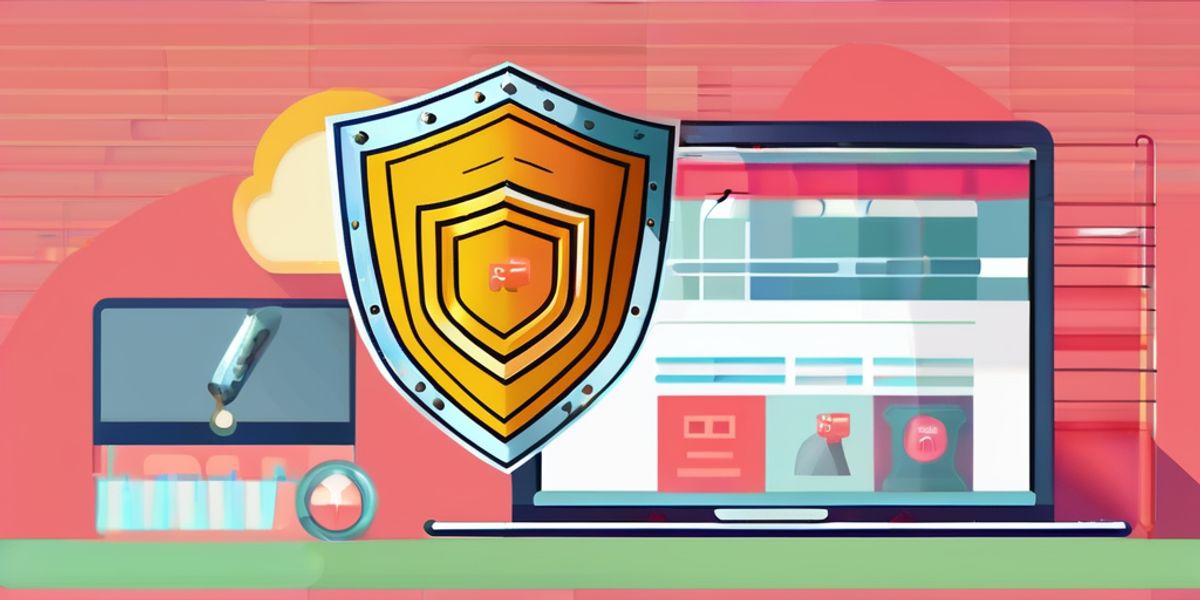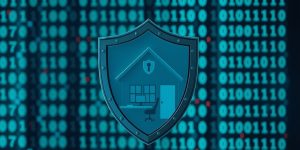In today’s digital age, ensuring the security and continuity of your business website is paramount. A robust website protection strategy not only safeguards your online presence but also builds trust with your customers. This article explores the key elements of website security, the role of employee training, and the importance of continuous monitoring and incident response.
Key Takeaways
- Implementing Secure Socket Layer (SSL), Regular Security Audits, and Protection Against DDoS Attacks are essential for maintaining website security.
- Firewall Configuration, Content Security Policy (CSP), and Web Application Firewall (WAF) are key elements of a robust website protection strategy.
- Employee training, including Phishing Awareness Programs, Access Control Training, and Incident Response Training, plays a crucial role in enhancing website security.
- Continuous monitoring through Real-time Security Alerts, an Incident Response Plan, and Security Incident Analysis is vital for proactive threat detection and response.
- By implementing a comprehensive website protection strategy and investing in employee training, businesses can mitigate risks and ensure business continuity online.
Importance of Website Security
Implementing Secure Socket Layer (SSL)
The adoption of Secure Socket Layer (SSL) certificates is a fundamental step in safeguarding the integrity and confidentiality of data in transit between a user’s browser and the business server. SSL certificates encrypt the data, ensuring that sensitive information such as login credentials, credit card numbers, and personal details remain secure from interception or tampering.
SSL is not just about encryption; it also provides authentication, giving users confidence that they are indeed communicating with the legitimate website. This is crucial for maintaining trust and credibility in the digital marketplace.
- Choose a reputable SSL certificate provider
- Install the SSL certificate on your web server
- Configure all website pages to use HTTPS by default
- Regularly update and renew the SSL certificate
Ensuring that SSL is properly implemented is not a one-time task but an ongoing commitment to website security.
The integration of SSL is often complemented by a Business Website Backup Solution, which provides an additional layer of security. Automated backups, fast restoration, and scalability are essential features that protect your online assets and keep your business resilient against cyber threats.
Regular Security Audits
Conducting regular security audits is a critical component of a comprehensive website protection strategy. These audits help identify vulnerabilities that could be exploited by attackers and ensure that all security measures are up to date. A thorough audit typically includes a review of the website’s code, server infrastructure, and data handling practices.
Security audits should be performed on a regular basis, and the frequency can be determined by the level of risk associated with the website. For high-risk sites, audits might be necessary as often as every quarter, while for others, an annual audit may suffice. It is also important to conduct an audit after any significant changes to the website or its environment.
- Review of website code
- Examination of server infrastructure
- Analysis of data handling practices
By proactively identifying and addressing potential security issues, businesses can significantly reduce the risk of a security breach. Regular audits are not just a preventative measure; they are an investment in the trust and reliability of your online presence.
Protection Against DDoS Attacks
In the digital age, Distributed Denial of Service (DDoS) attacks pose a significant threat to business continuity. Implementing robust defenses against these attacks is crucial for maintaining the availability of online services. A multi-layered approach is often required to mitigate the impact of DDoS attacks effectively.
- Establish a baseline of normal network traffic patterns.
- Leverage scalable cloud-based DDoS protection services.
- Configure network hardware to recognize and filter out attack traffic.
By understanding the normal traffic patterns, businesses can quickly identify anomalies that may indicate a DDoS attack, enabling a faster response to potential threats.
Regularly updating security measures and utilizing HTTPS can also play a supportive role in protecting against DDoS attacks. SSL/TLS encryption is essential not just for securing web traffic, but also for email and file transfers, while at-rest encryption safeguards stored data. The use of biometric authentication can further enhance security, ensuring that only authorized individuals have access to critical systems.
Key Elements of a Robust Website Protection Strategy
Firewall Configuration
A properly configured firewall serves as the first line of defense in a robust website protection strategy. It acts as a gatekeeper, controlling incoming and outgoing network traffic based on an applied rule set. Effective firewall configuration is crucial to prevent unauthorized access while allowing legitimate traffic to flow freely.
To ensure optimal protection, businesses should consider the following:
- Identification of all network entry points
- Establishment of clear firewall rules tailored to the business’s specific needs
- Regular updates and patches to the firewall software
- Monitoring and reviewing firewall logs for suspicious activity
It is essential to maintain a balance between security and accessibility to prevent disruptions in business operations while safeguarding sensitive data.
Selecting the right firewall solution often involves comparing various business website security services. These services typically offer different pricing options and levels of protection, catering to the needs of diverse businesses, from small enterprises to world-class brands. Additionally, they provide network and server protections, which are integral components of a comprehensive security posture. Businesses are encouraged to sign up for newsletters to stay informed on the latest security trends and threats.
Content Security Policy (CSP)
A Content Security Policy (CSP) is a critical component in the defense against cross-site scripting (XSS) and data injection attacks. By specifying which dynamic resources are allowed to load, a CSP serves as an additional layer of security that helps to detect and mitigate certain types of attacks, including those that can lead to data theft or site defacement.
Implementing a CSP can significantly reduce the risk of security breaches by controlling resources such as scripts, images, and videos. It’s important to define a policy that aligns with your website’s needs without overly restricting legitimate content or functionality.
When crafting a CSP, consider the balance between security and usability. Too strict a policy may interfere with legitimate content, while too lenient may not offer adequate protection.
To effectively manage a CSP, follow these steps:
- Review your site’s content sources and establish a whitelist of trusted domains.
- Test your policy in report-only mode to understand its impact before enforcement.
- Regularly update the policy to adapt to new security threats and content changes.
Web Application Firewall (WAF)
A Web Application Firewall (WAF) is a critical component in safeguarding web applications by filtering and monitoring HTTP traffic between a web application and the Internet. It helps protect web applications by blocking malicious traffic and preventing data breaches. WAFs are particularly effective against application-layer attacks, such as cross-site scripting (XSS) and SQL injection, which traditional network firewalls may not detect.
Continuous monitoring of network traffic is essential for the immediate detection of threats, and this is where an integrated Intrusion Detection System (IDS) can play a pivotal role. The benefits of such a system include enhanced security, early detection of potential threats, and support for regulatory compliance.
Implementing a WAF should be seen as a part of a multi-layered security strategy that includes other measures such as SSL certificates for secure connections.
While WAFs are powerful, they must be properly configured and regularly updated to adapt to new threats. Below is a list of best practices for maintaining an effective WAF:
- Regularly update WAF rules and signatures
- Customize WAF settings to fit the specific needs of your web application
- Test WAF configurations to ensure they do not block legitimate traffic
- Monitor WAF logs to identify and respond to potential threats
Role of Employee Training in Website Security
Phishing Awareness Programs
In the face of rising ransomware threats, it is imperative for businesses to educate their employees on the dangers of phishing. These malicious attempts to gather sensitive information can lead to significant financial impact, including ransom payments and costs associated with forensics and repairing reputation damage.
Phishing scams often begin with seemingly innocuous emails or messages that, upon closer inspection, contain malicious links or requests for confidential data. By implementing comprehensive phishing awareness programs, organizations can equip their staff with the knowledge to identify and avoid these deceptive tactics.
It is essential for employees to understand the urgency of robust security measures to prevent and mitigate the consequences of breaches.
The following list outlines key components of an effective phishing awareness program:
- Recognition of phishing attempts
- Procedures for reporting suspected phishing
- Best practices for password management and data protection
- Regular updates on new phishing techniques and trends
Access Control Training
Effective access control is a cornerstone of a secure online environment. Training employees on proper access control protocols ensures that sensitive information is only accessible to authorized personnel. Emphasize the principle of least privilege, which dictates that users are granted the minimum level of access necessary to perform their job functions.
Access control mechanisms can be complex, involving both physical and digital barriers. It is crucial to train employees on the various types of access controls, such as passwords, biometric scanners, and security tokens. A well-informed staff is less likely to make mistakes that could lead to unauthorized access.
By prioritizing compliance and cybersecurity, businesses can avoid costly penalties. It is essential to invest in cybersecurity measures, analyze risks, and consider cyber insurance for financial protection against cyber attacks.
Regular drills and training updates are necessary to keep pace with the evolving threat landscape. Employees should be tested on their knowledge of access control policies to ensure understanding and compliance.
Incident Response Training
The culmination of robust website protection strategies often hinges on the effectiveness of the incident response team. Incident response training is crucial in preparing employees to act swiftly and effectively in the event of a security breach. This training should encompass not only the technical aspects but also the procedural responses to various types of incidents.
Incident response protocols should be ingrained in the company culture to ensure that every team member is aware of their role during a security event. A well-trained response team can significantly reduce the damage caused by incidents and restore operations more quickly.
The goal of incident response training is to create a resilient environment where employees are the first line of defense against cyber threats.
- Recognize the signs of a security breach
- Understand the steps to contain the breach
- Communicate effectively within the team and to external stakeholders
- Document and analyze the incident for future prevention
By investing in comprehensive incident response training, businesses can leverage their workforce to safeguard their online presence. WebsiteSecurity.net stands as a testament to the importance of such training, offering unbeatable website security solutions that include reliable backups and monitoring services, thus serving as a trusted partner in cybersecurity excellence.
Continuous Monitoring and Incident Response
Real-time Security Alerts
In the digital age, real-time security alerts are a cornerstone of a proactive defense strategy. These alerts provide immediate notification of potential security incidents, allowing for swift action to mitigate risks. By understanding the motivations behind cyber attacks, businesses can tailor their alert systems to be more effective.
- Immediate detection of threats
- Quick response to incidents
- Continuous system monitoring
Real-time alerts are not just about detecting threats, but also about creating a culture of security awareness within the organization.
It is essential for businesses to integrate real-time alerts into their broader incident response plan. This integration ensures that every alert is assessed and acted upon according to its severity and potential impact on the business.
Incident Response Plan
A well-structured Incident Response Plan (IRP) is crucial for minimizing the impact of security breaches. Immediate and coordinated actions can significantly reduce the damage caused by incidents. The plan should clearly outline the roles and responsibilities of the incident response team, ensuring a swift and effective approach to any security threat.
- Identification of potential incidents
- Containment procedures
- Eradication of threats
- Recovery plans for affected systems
- Lessons learned and post-incident analysis
The effectiveness of an Incident Response Plan is not solely in its creation but in its regular testing and updating. Ensuring that all team members are familiar with the procedures is vital for a successful execution.
Businesses must also consider the integration of services that specialize in Ultimate Website Detection and Monitoring. These services offer comprehensive security assessments and are essential for maintaining the integrity of online assets. With exclusive promotions and a money-back guarantee, they provide an additional layer of security and peace of mind.
Security Incident Analysis
The culmination of a robust website protection strategy is the ability to analyze and learn from security incidents. Effective incident analysis not only helps in understanding the events that led to a breach but also in fortifying the website against future threats. It is essential to document every incident meticulously to identify patterns and vulnerabilities.
Incident analysis should be a structured process, involving the following steps:
- Identification of the incident’s nature and scope
- Collection and preservation of evidence
- Assessment of the impact on business operations
- Recommendations for preventing similar incidents
It is crucial for businesses to adapt and evolve their security measures based on the insights gained from incident analysis. This proactive approach can significantly reduce the risk of recurring security breaches.
By continuously updating the incident response plan with lessons learned, organizations ensure that their response to new threats is swift and effective. The goal is to minimize downtime and maintain customer trust, which is paramount for business continuity.
In the digital age, continuous monitoring and incident response are critical to maintaining the security and integrity of your business website. At WebsiteSecurity.net, we offer world-class solutions to protect your online presence from the myriad of cyber threats that lurk in the shadows. Don’t wait for a security breach to disrupt your operations—take proactive steps today. Visit our website to learn more about our unbeatable website security solutions and how we can help safeguard your digital assets.
Conclusion
In conclusion, implementing robust website protection strategies is essential for ensuring business continuity in today’s digital landscape. By prioritizing security measures such as regular updates, strong authentication protocols, and proactive monitoring, organizations can mitigate the risks of cyber threats and safeguard their online presence. It is imperative for businesses to stay vigilant and proactive in protecting their websites from potential vulnerabilities and attacks. Investing in comprehensive website protection not only protects valuable data and assets but also upholds the trust and reputation of the organization. As technology continues to evolve, staying ahead of cyber threats through effective protection strategies will be crucial for the long-term success and resilience of businesses.







